28 Bold Brazilian Beef Dishes That Wow Every Time
Brazilian beef dishes represent a vibrant culinary tradition deeply rooted in cultural heritage and regional influences.
Passionate chefs across different states craft extraordinary meat preparations that tantalize taste buds with incredible complexity.
Regional cooking techniques transform simple ingredients into remarkable gastronomic experiences that showcase incredible skill and creativity.
Sizzling cuts and unique marinades reflect generations of agricultural traditions and rich meat-preparation expertise.
Brazilian beef represents more than just food - it embodies a connection to landscape, family, and generations of agricultural innovation.
Local ranchers and skilled cooks collaborate to elevate beef into an art form that celebrates national identity.
These extraordinary preparations demonstrate how meat can transcend basic sustenance and become a profound cultural expression.
Get ready to dive into 28 signature Brazilian beef dishes that will ignite your culinary curiosity:
Signature Brazilian Beef Dishes Full of Flavor
Brazilian cooks know how to bring out the best in beef. Whether grilled at a churrasco or slow-braised at home, these dishes highlight bold marinades and irresistible textures.
Picanha
Picanha is a premium Brazilian beef cut prized for its rich flavor and tender texture from the top of the rump.
Brazilian steakhouses elevate this succulent meat through traditional churrasco grilling methods that highlight its natural qualities.
Butchers carefully select this cut for its distinctive fat cap, which adds incredible juiciness during cooking.
Gauchos typically skewer the meat in a curved shape and roast it over open flames, creating a crispy exterior and soft interior.
American butchers sometimes label this cut as sirloin cap or rump cap, though Brazilian preparation techniques remain most authentic.
Professional grillers recommend medium-rare cooking to preserve its delicate texture and prevent toughness.
Salt serves as the primary seasoning, allowing the meat's natural flavors to shine through.
International meat lovers increasingly recognize picanha as a superior beef experience that represents Brazilian culinary tradition.
Fraldinha
Fraldinha is a prized Brazilian beef cut celebrated for its intense marbling and complex flavor profile sourced from flank, short loin, and bottom sirloin regions.
Brazilian barbecue experts traditionally slice this long, thin meat against its grain to maximize tenderness before grilling.
Churrasco preparation transforms fraldinha into a succulent dish with a perfectly browned exterior and juicy pink center.
Portuguese culinary language gives this cut its name, with "fraldinha" literally meaning a small flap or diaper.
Grill masters recommend serving the meat with a sharp, vinegary salsa that complements its rich taste.
Salt and simple seasoning allow the beef's natural flavors to shine through during cooking.
Proper slicing and high-heat grilling are crucial techniques for achieving optimal texture and taste.
Passionate meat lovers consider fraldinha a premium cut that showcases Brazil's renowned beef traditions.
Maminha
Maminha is a prized Brazilian beef cut celebrated for its lean, tender texture and versatility in cooking methods.
Originating from Brazil, this cut corresponds closely to the US flank and bottom sirloin or tri-tip regions.
Brazilian barbecue enthusiasts prefer grilling maminha to medium doneness, which preserves its optimal tenderness and flavor.
Meat lovers appreciate its nickname "file mignon for the grill" due to its lean composition and exceptional grilling potential.
Culinary techniques include whole roasting, cubing for stews, and pan-frying thin steaks.
South American cooking traditions frequently feature maminha as a central protein in barbecue and home-cooked meals.
Regional preferences highlight its adaptability across different cooking styles.
Restaurants and home kitchens alike showcase this exceptional beef cut as a staple of Brazilian meat preparation.
Filet Mignon
Beef tenderloin is an exquisite premium cut from the cow's loin area, renowned for its exceptional softness and minimal muscle usage.
This luxurious meat originates beneath the ribs near the backbone, spanning the short loin and sirloin sections.
Prized for its unparalleled tenderness, tenderloin commands high prices among meat connoisseurs worldwide.
Professional chefs typically prepare this cut quickly using high-heat methods like grilling or broiling to preserve its delicate texture.
American, French, German, Brazilian, and Korean butchery traditions consistently recognize this cut's superior quality.
Its minimal connective tissue ensures an incredibly smooth eating experience.
Restaurants and gourmet kitchens consider tenderloin a top-tier beef selection.
Fine dining establishments often feature this melt-in-your-mouth meat as a signature dish.
Costela
Costela are Brazilian beef ribs celebrated for their tender, smoky essence achieved through traditional churrasco grilling techniques.
Brazilians prepare these meaty cuts by skewering them over open flames with minimal seasoning, primarily salt, to highlight the beef's natural flavors.
Plate ribs and dianteiro (front ribs) comprise this distinctive cut, which differs from American-style barbecue preparations.
Regional variations exist across Brazil, each adding subtle nuances to the cooking method.
Brazilian barbecue culture elevates these ribs as a centerpiece of social gatherings and weekend celebrations.
Slow cooking ensures maximum tenderness and deep, rich meat flavors.
Professional grill masters carefully monitor temperature and positioning to prevent burning.
Meat quality and precise grilling technique determine the final deliciousness of costela.
Alcatra
Alcatra is a premium Brazilian beef cut renowned for its exceptional tenderness and robust flavor profile.
Sourced from top sirloin, this large and lean steak dominates churrasco barbecue traditions with its distinctive character.
Brazilian grill masters carefully season alcatra with coarse salt, ensuring a simple yet powerful taste enhancement.
Grilling techniques involve slowly melting excess fat until a crispy exterior develops, creating an irresistible texture.
Churrascarias showcase this cut with precise carving techniques that highlight its natural succulence.
Professional barbecue experts select alcatra for its superior meat quality and substantial size.
Brazilian steakhouses consider this cut a centerpiece of their grilling repertoire.
Meat enthusiasts prize alcatra for its rich, intense beef flavor that exemplifies traditional Brazilian barbecue culture.
Contrafile
Contrafile is a prized Brazilian beef cut combining strip loin and ribeye sections, renowned for its exceptional marbling and intense flavor profile.
Portuguese origins explain its name, which literally means "against the grain," describing its unique slicing technique.
Brazilian steakhouses prominently feature this tender meat during traditional churrasco grilling methods.
Skewered and prepared over open flames, contrafile develops a rich, caramelized exterior while maintaining a succulent interior.
Fat distribution throughout the meat ensures maximum juiciness and robust taste during cooking.
Skilled grill masters carefully monitor temperature to preserve its delicate texture.
Restaurant patrons consider contrafile a premium beef selection for its superior quality.
Meat enthusiasts appreciate its melt-in-your-mouth consistency and deep, complex flavor characteristics.
Bife A Parmegiana
Bife a Parmegiana transforms Brazilian menus with its crispy beef cutlet topped with rich tomato sauce and melted cheese, originating from Italian immigrant culinary traditions.
Brazilian restaurants feature this dish as a hearty main course, typically using premium beef cuts like sirloin or filet mignon.
Chefs carefully pound the meat to ensure tenderness and maximize flavor absorption.
Seasoned beef receives a classic coating of flour, egg wash, and breadcrumbs before deep frying to achieve a golden-brown crust.
Marinara sauce generously covers the crisp cutlet, creating a moist base for abundant melted mozzarella cheese.
Side dishes often include white rice, french fries, or a fresh salad to complement the rich protein.
Restaurants nationwide serve this crowd-pleasing meal that reflects Brazil's multicultural culinary heritage.
Diners enjoy this satisfying combination of crunchy exterior and juicy interior with every savory bite.
Vaca Atolada
Vaca atolada delivers a hearty Brazilian beef rib stew where succulent meat drowns in thick, spicy cassava sauce.
Originating from Minas Gerais, this rustic dish combines tender beef ribs with rich, earthy cassava root creating an intensely flavorful meal.
Native Brazilians marinate beef with garlic, onions, and chili peppers before slow-cooking the meat until incredibly soft.
Colorau (urucum seed) adds a deep reddish color and subtle peppery warmth to the sauce.
Each spoonful blends complex regional spices with falling-apart meat and creamy cassava base.
Traditional accompaniments include white rice and fresh green salads that balance the stew's robust flavors.
Travelers exploring Brazilian countryside cuisine often discover this comforting one-pot meal as a signature regional specialty.
Restaurants and home kitchens across Brazil celebrate this soul-warming dish that reflects the country's rich culinary heritage.
Estrogonofe
Brazilian estrogonofe boasts a luxurious one-pot beef dish featuring a creamy sauce blending heavy cream, ketchup, mustard, and tomato paste with complex flavor layers.
Russian beef Stroganoff inspired this unique Brazilian adaptation, transforming the original recipe into a zesty national favorite.
Seared beef mingles with sauteed onions, garlic, and mushrooms during preparation, creating a rich and aromatic base.
Chefs carefully simmer the protein in the signature sauce until meat reaches peak tenderness.
Brazilian cooks elevate the dish with distinctive accompaniments like crispy batata palha (shoestring potato sticks).
White rice serves as the traditional side, complementing the sauce's tangy profile.
Regional variations sometimes include chicken as an alternative protein option.
Each serving delivers a harmonious blend of savory, sweet, and creamy flavors that make estrogonofe a beloved Brazilian comfort meal.
File De Costela
File de costela is a premium Brazilian beef cut prized for its exceptional tenderness and rich marbling from the ribeye cap muscle.
Brazilian barbecue (churrasco) chefs treasure this specific ribeye portion for its intense flavor and juicy texture.
Professional meat cutters carefully select this cut from the rib area, ensuring maximum quality and taste.
Grill masters typically season the meat with simple salt to enhance its natural flavors.
International meat enthusiasts recognize this cut as one of the most sought-after beef selections.
Brazilian steakhouses frequently feature file de costela as a highlight of their premium meat offerings.
Portuguese translation literally means "rib filet" and reflects its precise anatomical origin.
Meat connoisseurs consider this cut a top-tier selection for grilling and roasting.
Carne De Sol
Carne de sol is a traditional Brazilian beef preservation method originating from northeastern Brazil's semi-arid regions, where cattle ranchers developed this salt-curing technique to keep meat edible in hot climates without refrigeration.
Sertanejos pioneered this sun-drying process, generously coating beef or goat meat with coarse salt to extract moisture and prevent bacterial growth.
Hunters and ranchers would spread meat under direct sunlight, allowing natural dehydration to create a unique protein preservation method.
Salt acts as a powerful antimicrobial agent, ensuring meat remains safe for extended periods without modern cooling technologies.
Brazilian cuisine incorporates carne de sol in numerous dishes, including stews, grilled platters, and regional specialties.
Restaurants throughout northeastern Brazil feature this meat as a staple protein with intense, concentrated flavors.
Preparation involves carefully salting and slowly drying meat under intense sunlight for several hours or days.
File Oswaldo Aranha
Oswaldo Aranha is a classic Brazilian steak dish featuring a generous layer of crispy fried garlic atop a juicy beef cut, originating from Rio de Janeiro's Cosmopolita restaurant.
Brazilian politician Oswaldo Aranha inspired the dish's name through his consistent restaurant order of steak with abundant garlic.
Restaurant staff began preparing the steak precisely to his specifications, eventually naming the signature dish after him.
Traditional accompaniments include white rice, farofa (toasted manioc flour), and crunchy potato chips.
Restaurant patrons quickly embraced the hearty meal, transforming it into a beloved national favorite.
Brazilian steakhouses continue serving this garlic-rich plate as a testament to its cultural significance.
Regional variations sometimes include different cuts of beef or additional seasonings.
Diners appreciate the robust flavors and satisfying combination of textures in this iconic Brazilian specialty.
Cupim
Cupim or beef hump from Brazilian Zebu cattle stands as a uniquely fatty and exceptionally tender meat cut exclusive to Brazilian cuisine.
Brazilian ranchers prize this rare meat selection extracted from cattle's neck and shoulder region.
Churrasco restaurants showcase cupim as a premium roasted or stewed meat option with minimal blood and rich marbling.
Zebu cattle produce this special cut characterized by its stringy and soft texture that melts in you mouth.
Brazilians consider cupim a delicacy that requires slow cooking methods to enhance its natural flavors.
Regional restaurants often prepare cupim over open flames or in slow-roasting techniques.
Traditional preparation involves minimal seasoning to highlight the meat's natural richness.
Meat enthusiasts seek this cut for its distinctive fatty composition and melt-in-you-mouth experience.
Carne De Onca
Carne de onca represents a bold Brazilian beef tartare crafted in Curitiba since 1953 as an iconic regional specialty featuring raw minced beef blended with robust seasonings like garlic, chives, and chili powder.
Restaurant chefs carefully mix high-quality beef with fragrant olive oil and smooth Cognac to create a complex flavor profile.
Sweet paprika powder adds warmth and depth to this distinctive dish.
Traditional preparation involves precise chopping and delicate ingredient balancing.
Local restaurants serve carne de onca as an appetizer or light meal.
Diners appreciate its rich, spicy taste and unique texture.
Raw beef demands exceptional ingredient quality and careful handling.
Brazilian culinary traditions shine through this distinctive regional recipe.
Barreado
Barreado is a slow-cooked Brazilian beef stew that transforms tough meat into meltingly tender perfection through an extraordinary 12-48 hour cooking process.
Originating in Parana state during Carnival celebrations, this traditional dish features second-grade beef cuts simmered with onions, tomatoes, beef bouillon, cumin, and bay leaves in a clay pot.
Fried bacon adds rich depth to the complex flavor profile.
Cooks seal the pot with a unique dough ring made from manioc and wheat flour, creating an airtight environment that ensures maximum meat tenderness.
Native Brazilians carefully prepare this stew over low flames, allowing ingredients to merge into a deeply savory meal.
Indigenous cooking techniques transform tough meat cuts into an incredibly succulent experience.
Locals traditionally serve barreado - which means "covered in mud" - with rice and manioc flour.
Patinho
Patinho is a lean Brazilian beef cut from the top round steak with exceptional tenderness and flavor, sourced from the hind leg of cattle.
Brazilian butchers prize this meat for its versatility in multiple cooking methods, including grilling, roasting, and braising.
Marinating techniques help enhance its natural taste and soften the muscle fibers.
Restaurants and home cooks frequently slice patinho thinly for traditional Brazilian churrasco or prepare it as quick stir-fry dishes.
Brazilian barbecue experts recommend brief, high-heat cooking to maintain its delicate texture and prevent toughening.
Home cooks typically season the meat with rock salt, black pepper, and garlic for maximum taste.
Regional variations include using chimichurri or Brazilian barbecue sauces for additional flavor complexity.
Nutritionally, patinho offers high protein content with lower fat compared to other beef cuts.
Capa De File
Capa de file is a premium Brazilian beef cut prized for its triangular shape and thick fat cap that ensures exceptional tenderness and rich flavor.
Brazilian steakhouses celebrate this top sirloin cut for its superior marbling and succulence during grilling.
Churrasco preparations often feature capa de file as a centerpiece protein, showcasing its natural qualities.
Minimal seasoning like coarse salt allows the meat's inherent taste to shine through.
Skilled grill masters carefully cook this cut to preserve its juicy texture and robust beef profile.
Brazilian barbecue traditions elevate capa de file as a cherished meat selection.
Skewered or grilled whole, this cut represents the pinnacle of Brazilian meat preparation techniques.
Meat enthusiasts consider capa de file a top-tier beef experience that highlights Brazil's exceptional beef culture.
Coxao Mole
Coxao mole is a tender Brazilian beef cut from the bottom sirloin, prized for its lean and flavorful meat near the hip joint of the animal's hind leg.
Brazilian churrasco often features this cut as skewered or thinly sliced meat for grilling.
Portuguese translation of "soft thigh" reflects its relatively tender texture compared to other hindquarter cuts.
Butchers carefully select this specific section for its balanced meat quality.
Grilling methods enhance its natural flavors and maintain its softness.
Restaurants and home cooks prefer this cut for its versatility in Brazilian cuisine.
Skilled meat preparation ensures maximum enjoyment of its unique characteristics.
Marinades and slow cooking techniques further improve its taste and texture.
Paleta
Brazilian paleta represents a robust beef shoulder cut prized for its deep, complex flavor profile and rich marbling.
Brazilian butchers select this meat from the cow's shoulder region, valuing its versatility in traditional slow-cooking methods.
Chefs transform paleta through extended braising techniques that break down tough muscle fibers and create tender, succulent results.
Stews, pot roasts, and hearty meat dishes often showcase paleta's exceptional texture and taste.
Brazilian home cooks frequently use this cut in regional recipes that demand long, gentle cooking processes.
Restaurants and family kitchens alike rely on paleta for its economical price and incredible flavor development.
Professional meat preparers recommend marinating the cut to enhance its natural richness and improve tenderness.
Brazilian culinary traditions have perfected paleta preparation through generations of careful cooking techniques.
Peito
Peito is a robust Brazilian beef cut from the chest area that demands slow cooking methods to transform its tough muscle fibers into meltingly tender meat.
Butchers recognize this cut's complex texture, packed with connective tissues that require extended braising or roasting to break down collagen and develop rich flavors.
Brazilian culinary traditions often transform peito into pastrami or carne de panela, dishes that showcase the meat's potential through patient cooking techniques.
Restaurants and home kitchens carefully select this cut for its deep, intense beef profile and ability to absorb marinades and seasonings.
Professional chefs understand peito's unique composition requires low and slow heat to render it perfectly edible.
Unlike American brisket, Brazilian peito has subtle differences in muscle structure and fat distribution.
Cooking times typically range from 3-6 hours depending on the specific preparation method.
Regional Brazilian recipes highlight peito's versatility through diverse cooking approaches that maximize its inherent meaty characteristics.
Lagarto
Lagarto is a distinctive Brazilian beef cut from the eye of round roast, named for its lizard-like elongated shape that tapers at one end.
Brazilian butchers carefully select this lean meat from the hind leg of cattle, prizing its potential for deep flavor development through slow-cooking techniques.
Marinating transforms the initially tough meat into a tender, succulent dish that showcases traditional Brazilian culinary expertise.
Home cooks frequently prepare lagarto in rich stews, pot roasts, and braised preparations that help break down its muscular fibers.
Restaurants and home kitchens across Brazil embrace this cut for its affordability and versatility in creating robust meat dishes.
Professional chefs often season lagarto with robust spices and herbs to enhance its natural taste profile.
Portuguese immigrants likely introduced this specific butchering technique to Brazil, contributing to its culinary heritage.
Salt, garlic, and black pepper remain classic seasonings that complement lagarto's unique meat characteristics.
Acem
Acem is a flavorful Brazilian beef cut from the shoulder region, prized for its rich taste and economical value in Brazilian cuisine.
Brazilian home cooks transform this lean and connective tissue-rich meat through slow-cooking techniques like stews and braises.
Churrasco enthusiasts frequently use acem for skewered grilled dishes, highlighting its versatility.
Its robust flavor develops beautifully during extended cooking processes.
Ground beef dishes also benefit from this meat's unique texture and taste profile.
Restaurants and home kitchens across Brazil incorporate acem into numerous traditional recipes.
Compared to premium cuts like filet mignon, acem offers a more budget-friendly protein option.
Brazilians appreciate this cut for its ability to become tender and delicious when prepared with care.
Musculo
Beef shank is a challenging leg meat cut from both front and hind cow limbs, characterized by dense muscle tissue and significant connective tissue that requires slow, moist cooking methods to transform its tough texture into tender, rich-flavored protein.
Butchers typically separate shanks from upper and lower leg regions, recognizing their intense muscle development from constant animal movement.
Braising remains the most effective technique for breaking down stubborn muscle fibers and releasing deep, concentrated beef flavors.
German, American, and Brazilian meat classification systems consistently identify this cut as a complex segment requiring patient cooking approaches.
Professional chefs often select beef shanks for traditional dishes like osso buco, where prolonged simmering creates succulent, fall-apart meat.
Home cooks can achieve excellent results by using pressure cookers or slow cookers to soften these muscular sections.
Low and slow preparation methods guarantee maximum meat tenderness and robust flavor extraction.
Professional butchers recommend selecting shanks with substantial marrow for enhanced taste and nutritional value.
Fraldao
Fraldao is a distinctive Brazilian beef cut prized for its robust flavor and coarse texture, sourced from the bottom sirloin near the flank and rib areas.
Brazilian butchers carefully select this meat section for its rich marbling and intense beef profile.
Grilling enthusiasts appreciate fraldao's deep meaty characteristics that shine during barbecue preparations.
Restaurants across Brazil frequently feature this cut as a centerpiece in churrasco-style meals.
Professional meat handlers trim the cut meticulously to enhance its natural qualities.
Regional Brazilian steakhouses consider fraldao a superior beef selection for serious meat lovers.
Cooking methods typically involve high-heat grilling to maximize its inherent flavor potential.
Traditional Brazilian barbecue techniques ensure fraldao remains juicy and tender when prepared correctly.
Pescoco
Pescoco beef represents a robust neck cut sourced from cattle with intense muscular characteristics that demand slow-cooking techniques.
Brazilian butchers prize this meat for its deep flavor profile and substantial connective tissue content.
Chefs typically transform pescoco through braising or stewing methods to break down tough muscle fibers.
Slow-cooking processes help tenderize the meat while extracting rich, concentrated beef flavors.
Professional meat processors recommend low-temperature cooking for several hours to achieve optimal tenderness.
Regional Brazilian cuisine frequently incorporates this cut into hearty stews and traditional meat-based dishes.
Butchers consider pescoco an economical option for families seeking flavorful protein selections.
Restaurants often feature this cut in rustic, slow-simmered recipes that highlight its inherent meaty qualities.
Aba De File
Aba de file stands out as a premium beef cut from Brazil's prized cattle regions, featuring exceptional marbling and supreme tenderness that makes it a top choice for churrasco grilling.
Brazilian gauchos traditionally select this rib-section meat for its rich flavor and soft texture, preparing it over open flames with minimal seasoning to highlight its natural qualities.
Professional butchers carefully trim the cut to preserve its optimal fat content, ensuring maximum juiciness and depth of flavor.
Restaurant kitchens across Brazil frequently showcase this premium beef as a centerpiece in regional barbecue traditions.
Skilled meat handlers recognize this cut's superior qualities compared to other beef selections.
Regional ranchers take great pride in raising cattle that produce such high-quality meat.
Professional grillmasters recommend cooking aba de file to medium-rare for best results.
Diners appreciate its melt-in-your-mouth texture and intense beef flavor that represents Brazil's rich meat culture.
Ponta De Agulha
Ponta de agulha is a prized Brazilian beef cut from the rib section, celebrated for its exceptional marbling and intense flavor profile.
Brazilian barbecue enthusiasts treasure this tender meat for its exceptional juiciness and rich taste.
Butchers carefully select this specific rib portion for its superior quality and consistent texture.
Churrasco restaurants frequently feature ponta de agulha as a premium grilling selection.
Brazilian steakhouses showcase this cut as a premium protein option.
Gauchos traditionally prepare this meat using direct flame grilling techniques.
Salt and minimal seasoning enhance its natural beef characteristics.
Meat lovers consider this cut a top-tier selection for high-quality barbecue experiences.
What’s the Difference Between Brazilian and American Beef Cuts?
Brazilian and American beef cuts reflect distinct culinary traditions, but both showcase the rich flavors of quality beef:
Understanding these differences helps appreciate the unique flavors and dining experiences of Brazilian and American beef traditions.

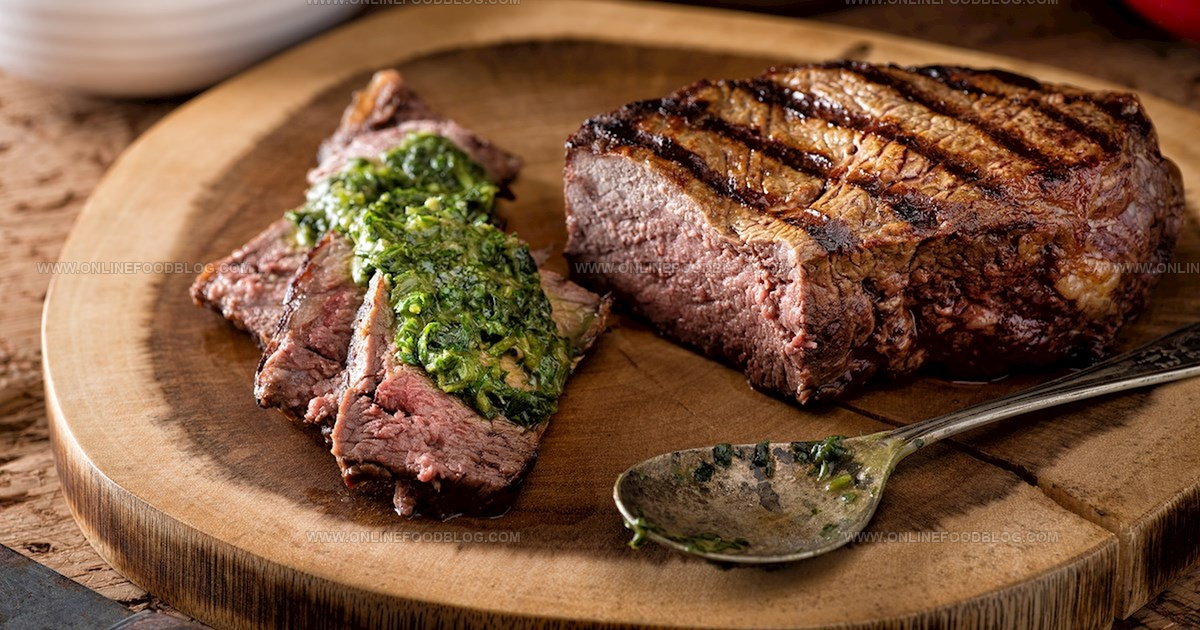
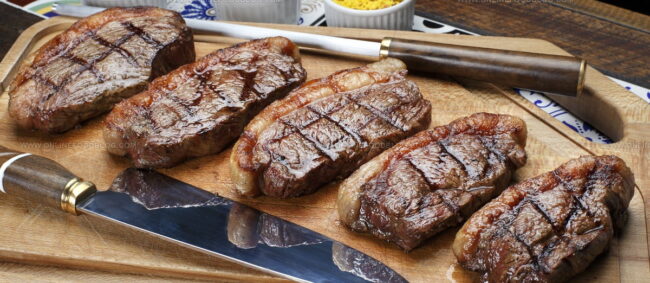
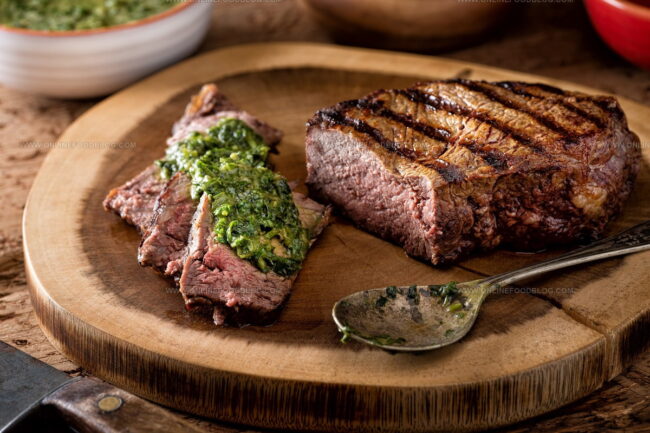
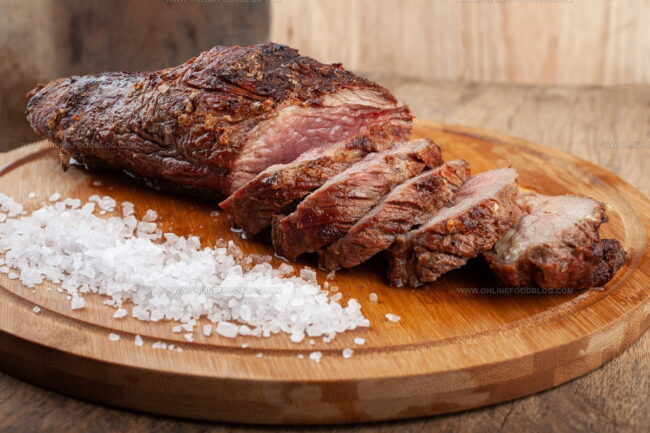
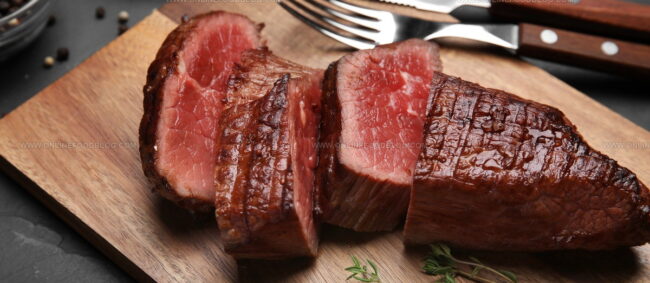
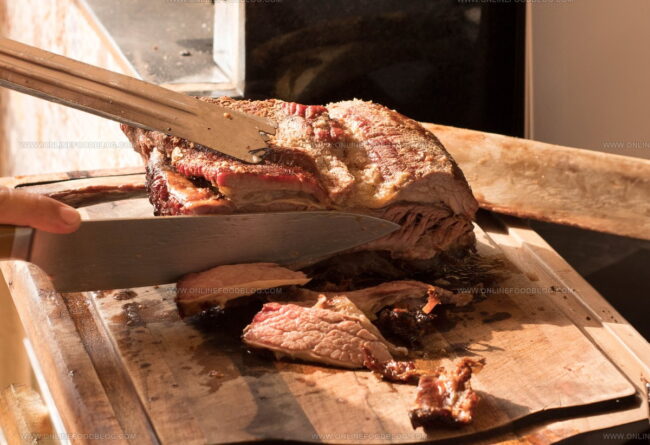
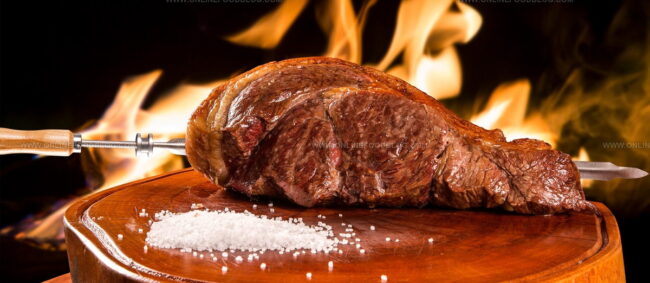
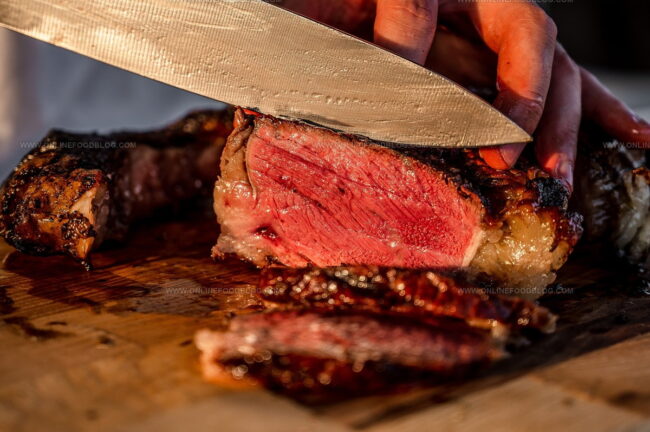
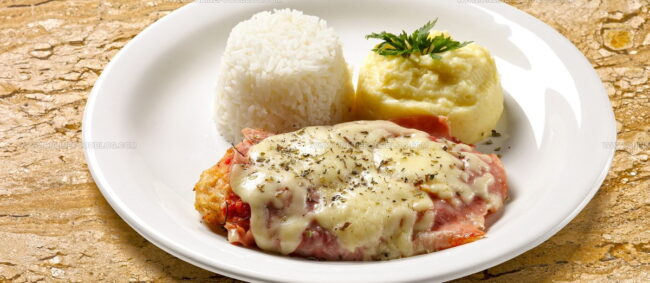
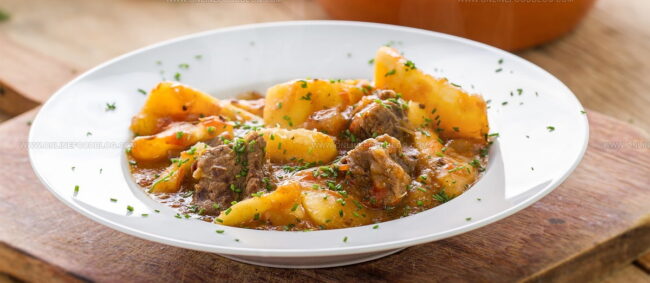
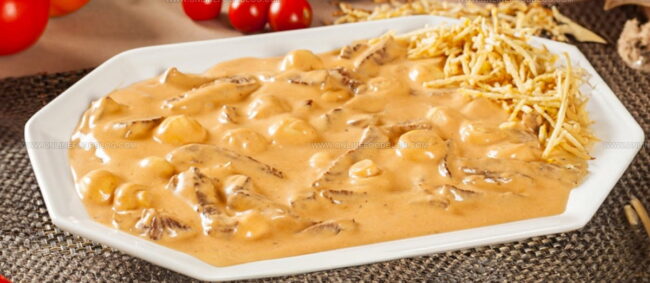
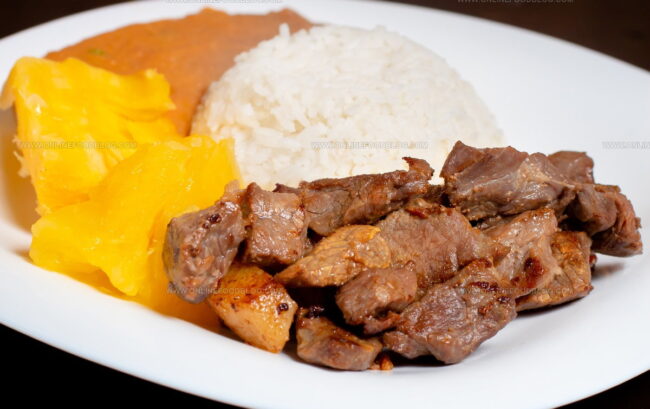
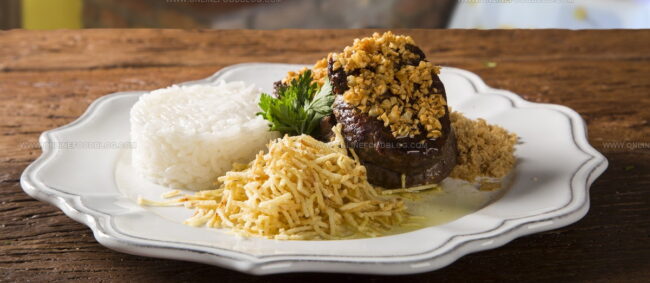
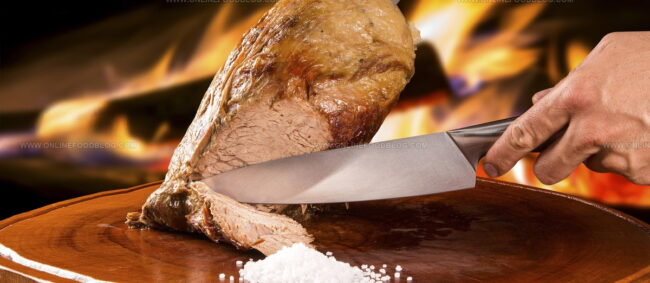
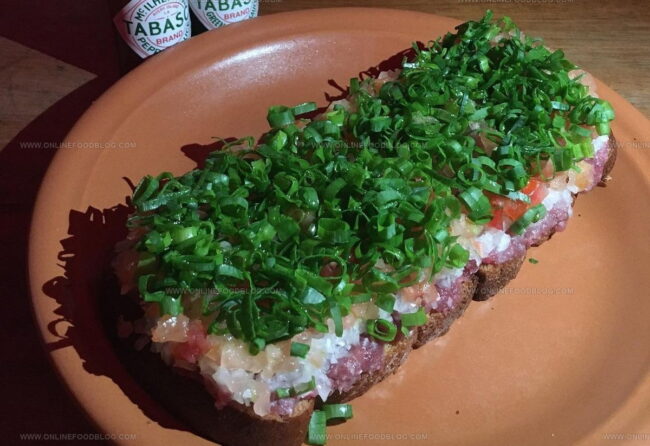
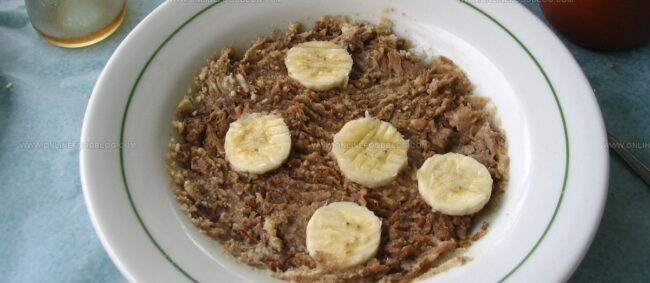
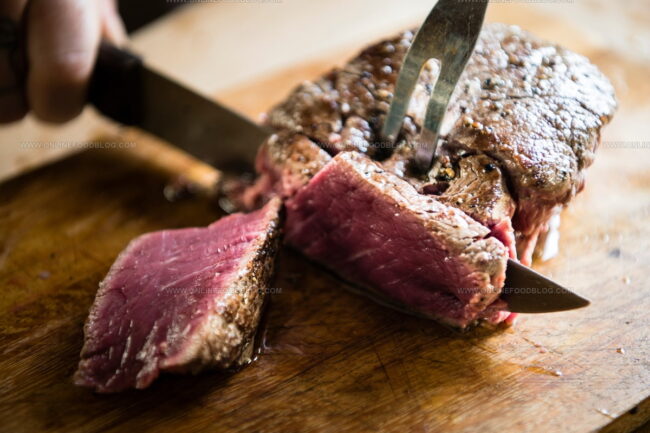
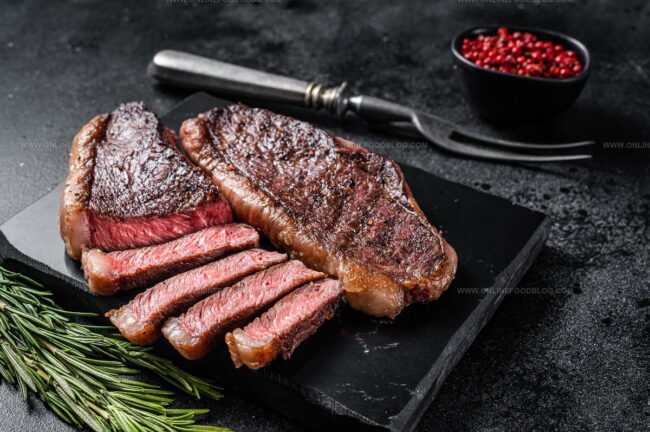
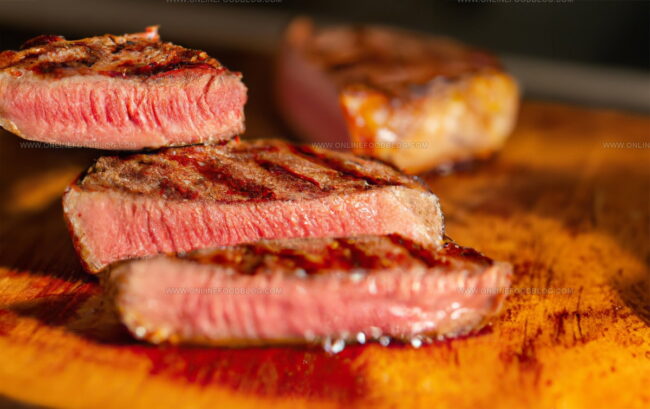
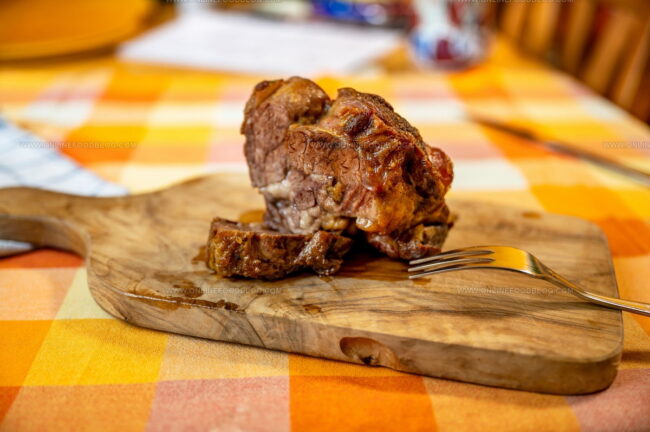
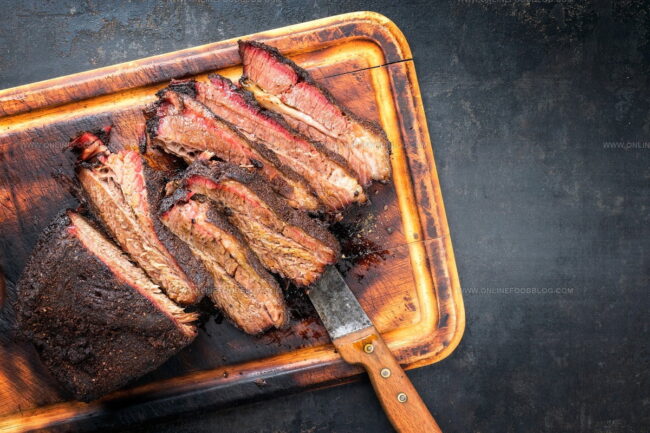
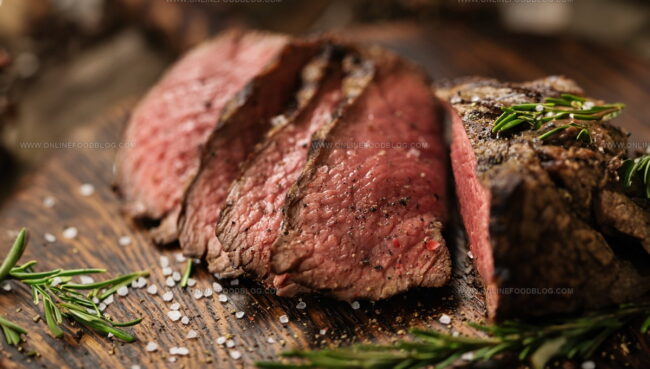
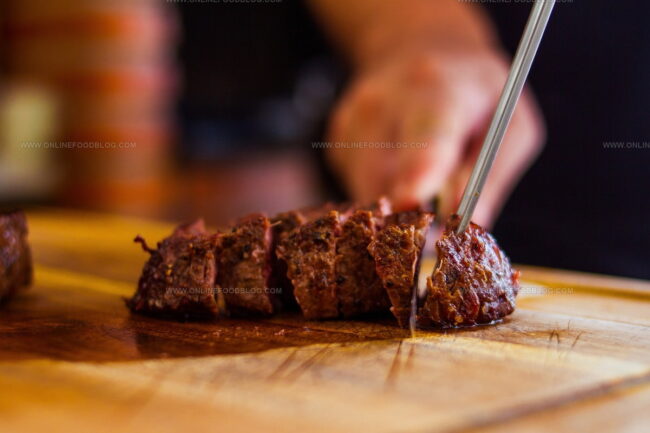
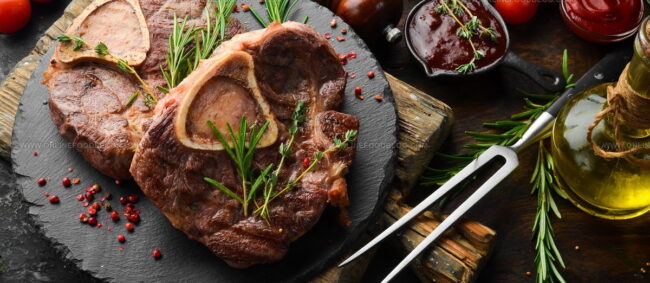
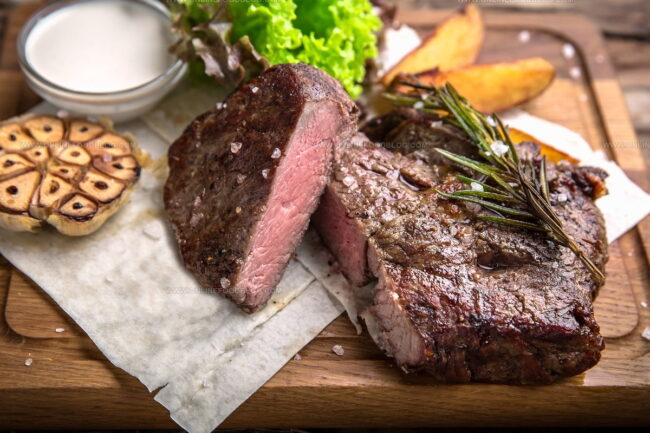
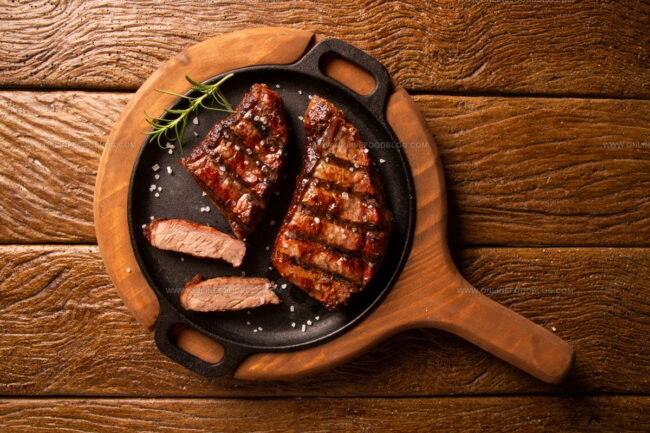
Lucas Bennett
Founder & Recipe Creator
Expertise
Simple Everyday Recipes, Sustainable Cooking Practices, Creative Meal Planning, Recipe Testing and Improvement
Education
Fox Valley Technical College, Appleton, Wisconsin
Lake Superior College, Duluth, Minnesota
Lucas Bennett’s cooking journey started in his parents’ kitchen, where he learned to prepare tasty, no-fuss meals from scratch. His culinary passion led him to Fox Valley Technical College, where he gained practical cooking skills.
He then expanded his focus on sustainability at Lake Superior College. Today, Lucas shares easy, approachable recipes designed to make cooking enjoyable and stress-free for everyone.